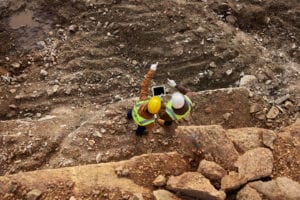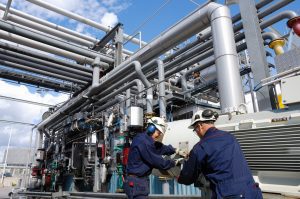The COVID-19 pandemic has had profound effects on our lives that transcend health-related matters. It has forced entire industries to rethink operational processes and core business fundamentals, and one of the most remarkable outcomes is the acceleration of digital transformation strategies.
In mining, where adoption of Industry 4.0 traditionally has lagged behind other industries, restrictions imposed by the pandemic served as a wake-up call to automate and get connected. With much of the workforce having to work from home, mining companies were forced to evaluate their processes and technologies to embrace industrial transformation to drive agility and operational efficiencies.
Obviously, no amount of connectivity can entirely remove humans from mining operations, but companies discovered that many tasks that can be performed remotely. This realization isn’t exclusive to mining; 63% of C-suite and technology leaders said in a recent survey that COVID-19 accelerated their digital transformation efforts. And 49% digital transformation became a priority only after the pandemic started.

In mining, the acceleration of digitization has manifested itself in various ways, primarily industrial automation and the implementation of remotely managed data-driven systems designed to improve day-to-day operations and lay the groundwork for predictive maintenance. Remote connectivity has various applications in mining, from tracking assets and workers to equipment monitoring to troubleshooting. With troubleshooting, technicians on site can connect remotely to engineers who walk them through the steps to fix or restart a piece of equipment.
Modernizing mining operations for Industry 4.0
Digital transformation in mining is no easy task. It requires a lot of planning and vision. Legacy technology and electrical equipment must be replaced, and communications protocols need to be updated. It isn’t uncommon to find Windows XP and Windows 7 still in use. Companies now are replacing those systems with Windows 10 and virtual machines that connect to cloud infrastructures and edge computing networks.
The networks themselves also must be updated. Mining operations are replacing coaxial cables with Ethernet connections, and converting from older communications protocols such as Modbus RTU to Ethernet Modbus/TCP. The newer protocol supports the convergence of IT and Operational Technology (OT), and enables remote management and easier access to data. As such, network updates are key to the implementation of data capture and analytics systems that enable real-time monitoring and predictive maintenance.
To support IT/OT convergence and connected operations, the mining industry is deploying Industrial Internet of Things (IIoT) and edge computing networks. IIoT networks transmit data captured from on-site sensors, and edge networks which make it possible to process and analyze the data in real time by keeping it as close to sources and users as possible.
Digital transformation challenges for Industry 4.0
All the changes taking place in mining raise several challenges. Perhaps the biggest one involves securing IP-connected systems against cyber threats. As mining operations deploy new systems and become connected, they must ensure that everything is protected through cybersecurity best practices and technologies. Cyberattacks are an ever-present danger as evidenced by recent ransomware attacks against the Colonial Pipeline, and meatpacker JBS. To help protect against cyber dangers, in 2017 six mining companies formed a non-profit group to share threat information and security best practices.
Other challenges involve operational safety and the need for expertise to plan and execute digital transformation. Most companies don’t possess all the requisite technical expertise and experience for digital transformation on their own.
At Graybar Canada, we help mining customers gain agility and resilience with digitization projects with a full complement of value-added services, from conception and planning to execution and to post-implementation management. We work with clients to implement systems that provide visibility into their environments as well as remote access and data collection to drive business decisions, both in real time and for long-term strategic decisions.
Access digital transformation resources
Graybar Canada automation specialists work with clients to develop proofs of concept, map solutions to outcomes, and provide the guidance and training to extract maximum value from digitization investments. Our partnership with Schneider Electric is essential to our mission. Schneider’s EcoStruxure™ for Industry platform delivers visibility and remote monitoring and management to improve efficiency and safety for workers and processes.
Working with Schneider, we provide systems and services to optimize asset performance and enable remote work, providing remote access for troubleshooting (Secure Connect), anytime/anywhere access for diagnosis (Augmented Operator), and a cloud-based services platform that remotely tracks equipment (Machine Advisor).
We work with Schneider’s technical support experts and Schneider Alliance Partners to help with commissioning and post-implementation services. Our end-to-end service approach is designed to help customers, not only in mining but also other industries, to fully embrace digital transformation so they can better compete in the 21st century.
Learn more about how Graybar Canada and Schneider Electric solutions can support your Industry 4.0 efforts.

